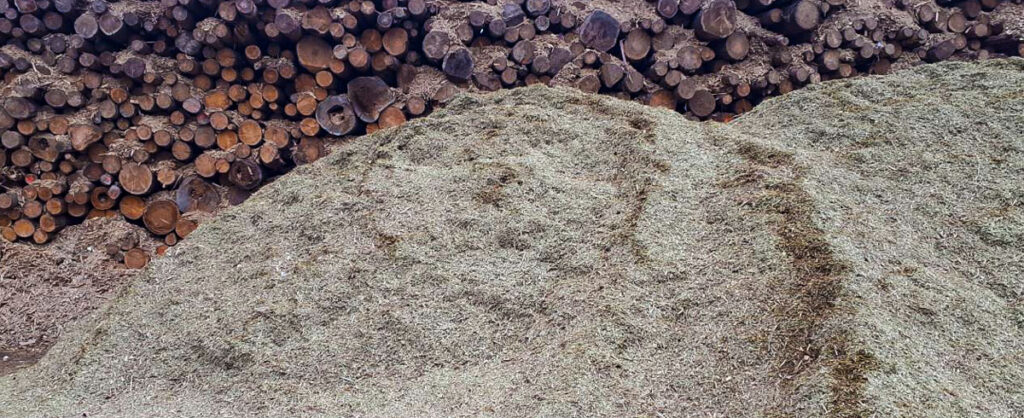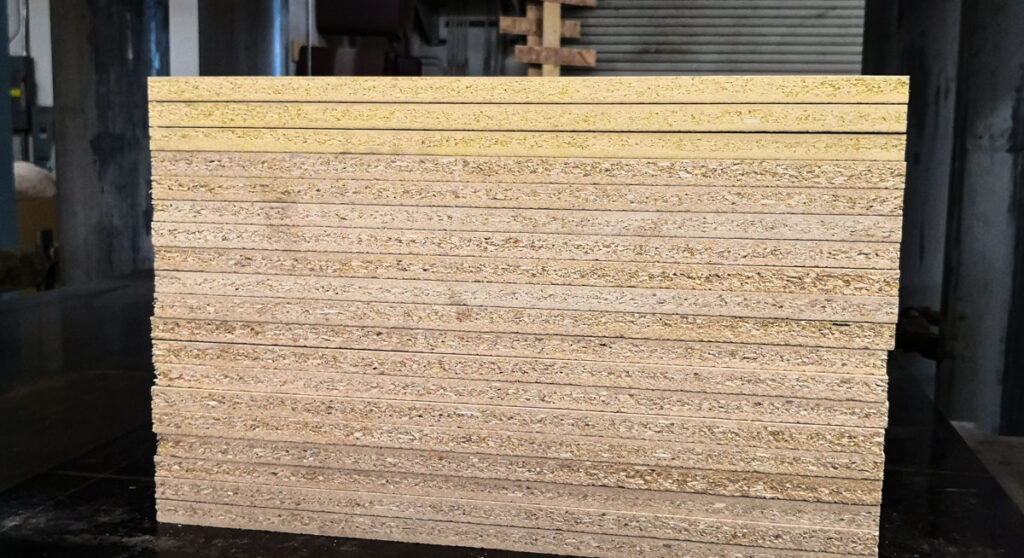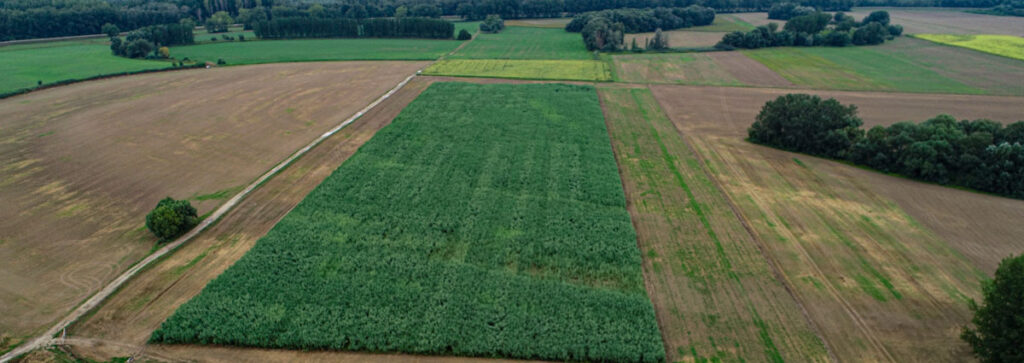1/25
Plant-Based Leaders | Hexas Biomass
Woman-Owned Startup Uses Grass to Save Forests

CEO of Hexas Biomass Inc.
A forest of 20-year old pine trees and a field of giant perennial grass appear to have little in common, but once harvested, their biochemistry is actually quite similar.
Wendy Owens, CEO of Hexas Biomass Inc., founded her startup company on that insight. “We’ve developed varieties of a giant perennial grass that are exceptionally versatile and fast-growing and able to serve as a substitute for wood, bamboo, and fossil fuel-based raw materials,” Wendy explained. “We call the varieties Xano Grass.”
Cut the Grass, Leave the Trees

Our forests are increasingly threatened by climate change, forest fires, and bark beetles and other pests.
The idea behind Hexas grew out of Wendy’s love for trees and the need to ease the industrial burden on forests globally. “When it comes to wood, we can be a supplement or total replacement,” said Wendy. “That’s essential as our forests are increasingly threatened by climate change, forest fires, and bark beetles and other pests.”
Meanwhile the global demand for wood is growing exponentially, driving up wood costs. The USDA expects wood prices in the US to rise 31-46% between now and 2050.

Hexas is working with current and potential customers to use Xano Grass fiber to produce particle board, medium density fiberboard, packaging, bioplastics, and aggregate. When turned into a renewable fuel, Xano Grass biofuels meet the requirements of Renewable Fuels Standard (RFS) Program. EPA-approved biofuel applications of Xano Grass include biodiesel, renewable natural gas, jet fuel, heating oil, naphtha, and ethanol.
“Xano Grass produces three times more ethanol per acre than corn,” said Wendy. “This means it can replace fossil fuels and allow corn to be used for food, not fuel.” She added that when converted into energy pellets, Xano Grass burns as hot or even hotter than wood pellets in BTUs per pound. In addition, Hexas is also exploring its ability to be used in hydrogen production.
From Grass to Globally Recognized Furniture

To upgrade to a ‘more sustainable lightbulb,’ companies shouldn’t have to replace the entire light fixture.
When companies are considering a shift to more sustainable raw materials, like Xano Grass, they often study the impact of such a shift on their already existing manufacturing systems, fabrication processes, and bottom line.
“To upgrade to a ‘more sustainable lightbulb,’ companies shouldn’t have to replace the entire light fixture,” said Wendy. “We can deliver Xano Grass raw material as dust, chips, or fiber of any size or moisture content. And it drops right into existing manufacturing systems.”
Wendy added, “We work with an international home goods company on fiberboard applications, which they plan to utilize in their furniture,” said Wendy. One of Hexas’ largest customers is a well-known Fortune 100 brand, with stores all around the world.

In place of wood, Xano Grass fiber is seamlessly dropped into the existing particle board production process, helping to reduce the burden on forests all around the world.
In additional to the current applications, Hexas is studying how its feedstock may be used in pulp and paper, green chemicals, textiles, building materials, and composite materials such as concrete and fiberglass. “Right now we are testing Xano Grass fiber in concrete, in order to make it lighter while enhance its acoustic and insulative properties without losing its strength,” explained Wendy.
Additional Environmental Benefits

Xano Grass can help remediate marginal land so it can be used to produce food crops again.
“We wanted to offer a plant-based raw material product that was both regenerative and cost effective,” said Wendy. “A product that is good for fields and farmers.”
In addition to reducing the pressure to harvest the world’s trees, Xano Grass also improves the soil by returning nutrients to the earth, preventing soil erosion, and capturing significant amounts of carbon in the soil.
“It grows in a variety of soils – salinated, sandy, nutrient-poor, and soil that has deteriorated. It also will remediate soil by removing pollutants, including heavy metals, chemicals, and effluviant,” added Wendy. “For farmers, that means it can help remediate marginal land so it can be used to produce food crops again.”

Xano Grass also prevents nutrient run-off from excess fertilizer when planted along row crops. “Studies have shown that Xano Grass absorbs the excess nutrients applied to the row crops, helping to prevent algae blooms in rivers and watersheds,” added Wendy.
When a company chooses Xano Grass, Hexas goes to work contracting with local farmers to grow it, offering them long-term contracts. “From the very first year, Xano Grass offers farmers solid annual yields, 20 or more dry tons per acre. This creates a steady revenue stream for them. And Xano Grass doesn’t require a lot of time in the field to support production,” explained Wendy.
Importantly, Hexas will not allow cultivation that displaces crops grown for food. “We only use marginal land, which we define as land that cannot economically support food crop production,” said Wendy. But, she says, farmers are often eager to put such land to work, especially given all Xano Grass’ environmental benefits.
Strengthening Local Economies

Our customers are supporting their local farmers, and that builds important relationships and keeps revenue within those local communities.
Just like in real estate, biomass production comes down to location, location, location because transporting low density biomass long distances doesn’t make economic sense. “Shipping any kind of biomass is about time and space,” Wendy said.
With that limitation in mind, Hexas strives to enlist farmers within 60 miles of a customer’s manufacturing plant. The good news is that Xano Grass thrives in a broad range of climates.
Unforeseen benefits have come from these transportation challenges. “It means that our customers are supporting their local farmers, and that builds important relationships and keeps revenue within those local communities,” explained Wendy.
Hexas is looking to strengthen this idea by working with community stakeholders, like the Yuba Community College District in northern California. They are hoping to train the next generation of agronomists, biomass processors, as well as many others who can build careers in the new bioeconomy.
Choosing an Accelerator

We met mentors that we’re still working with today.
Like many start-ups, Wendy sought the support of a start-up accelerator, researching a handful before identifying which was the best fit for Hexas. Wendy chose Cascadia CleanTech Accelerator from the CleanTech Alliance and Vertue Labs and had an incredible experience learning with them.
“The program not only examined our ideas at the macro level, but dug deep into the technological and economic feasibility,” said Wendy. “The networking was essential as well. We met mentors that we’re still working with today.”
Hexas won the Standout Company Award in 2019.
“Even though this is my fourth start-up, there’s always room to learn — so we feel extremely fortunate for the experience,” she added.
Based on her experience, Wendy recommends participating in an accelerator with a proven track record. She suggests looking into the companies that have previously participated in the accelerator and meeting with a few before making any important decisions.
“Review the curriculum to make sure it meets your needs and understand the time commitment,” Wendy adds. “Accelerators can consume your entire day, leaving founders to run their business at night.”
Ms. Owens recommends avoiding any accelerator that requests large upfront fees and suggests that founders think very carefully about whether or not they are willing to give up equity in their company in exchange for funding and participation. Many accelerators request equity as a condition of joining their programs.
Wendy purposely chose an accelerator that did not require Hexas to give up any equity. “It was too early in our development to understand how that would impact our cap table and the company’s valuation further down the line,” she added.
Federal Programs and Support

Companies who can deliver sustainable products will find an eager market of more than 136 million U.S. customers.
Policymakers in Washington have an important role to play when it comes to ensuring a competitive plant-based products industry, explains Wendy, singling out the USDA BioPreferred Program for special praise. She suggests that the federal government can and should do more by promoting non-food bioenergy crops as viable substitutes for petroleum-based products and first-generation bioenergy crops like corn.
Wendy believes, “Washington needs to accentuate and accelerate the bioeconomy through policies and regulations that support its expansion in rural communities in particular.” She points to the addition of bioeconomy-based NAICS codes as a very important example of where a relatively simple policy change could give a real boost to the industry.
“There is no specific NAICS code for plant-based products or their raw material components. There’s no code for biomaterials or bioenergy,” explained Wendy.
Wendy went on to say that without such codes, the federal government cannot effectively measure these industries.
While the federal government has an essential role to play, Wendy says consumers will ultimately drive the market. Research from the Plant Based Products Council (PBPC) shows that 54% of U.S. consumers view these types of products favorably and more than half are more likely to purchase plant-based products in the next three months.
“Companies who can deliver sustainable products will find an eager market of more than 136 million U.S. customers, according to the data,” said Ms. Owens.
Interested in learning more about how plant-based products contribute to a more sustainable economy? Sign up for our newsletter.
